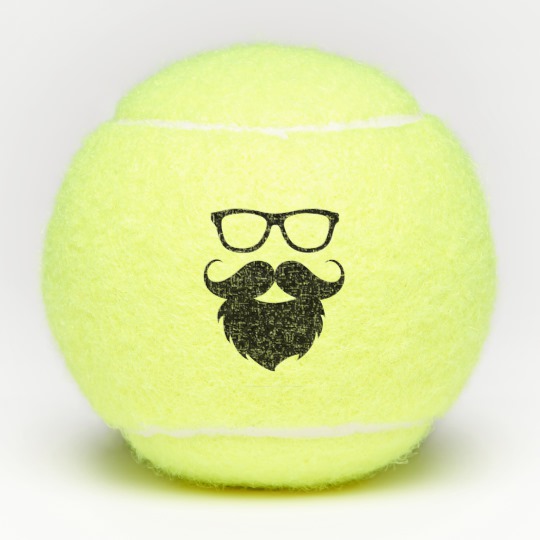The life of a tennis ball begins when it is manufactured using many raw materials that include rubber as the main component and is used along with zinc as the main metal element. A tennis ball is made, placed in a pressurized canister and shipped from a factory. It is then sold by a retailer and used for play on a tennis court. All Tennis Balls in the Modern age are made of a hollow rubber core covered in a wool or nylon shell which is known as the nap. The pressurised air inside the rubber core makes the ball bounce, balls which do not have enough pressure inside make a thud when they hit the floor. As the tennis ball loses pressure during play on the course of time, it is soon declared not suitable by the player and ultimately discarded.
Types of Tennis Balls
- Regular Duty: Best for Clay Court. Thinner felt that is woven tightly around the ball’s core to minimize the amount of clay that enters under the felt preserving its integrity over time.
Available at: Tennisplaza.com
- Extra Duty: Best for Hard Court. Thicker felt woven not as tightly around the ball’s core allowing it to be able to last the unforgiving nature of Hard Courts.
Available at: Tennisplaza.com
For Beginners and Kids:
- Stage 3 (Red): These beginner balls are created for young children (typically 10 years or younger) to help build skills, develop proper movement, fine-tune coordination, and boost confidence. Approved for play on a 36-foot court format.
Available at: Tennisplaza.com
- Stage 2 (Orange): These are reduced flight balls and are great for use on a reduced length of 60-foot courts. While more advanced than Stage 3, these will still slow down the game.
Available at: Tennisplaza.com
Stage 1 (Green): The last stage before a tournament tennis ball, these feature a slightly lower bounce and help beginners use proper technique. Typically used on a full size 78 foot length tennis court.
Available at: Tennisplaza.com

What is a “Dead” Tennis Ball?
A dead tennis ball signifies a ball that is old and has lost its bounce. In other words, it becomes flat and bounces much less than a ball fresh from the can. Depending on its use a new ball can become dull within just one session of constant hitting for a few hours. For this reason, competitive players will open a new can or several new cans for every match. Typically balls will lose their bounce and become “dead” starting after 3 hours on average.
How to Determine if a Ball is Dead
- Squeeze: When you hold the ball in your palm and squeeze, if the ball gives easily and you’re able to pinch the sides together then the ball is too flat. Compare the squeeze to that of a new ball and notice the difference between a new ball and a heavily used ball.
- Bounce: Comparing the bounce of a dead ball or heavily used ball to that of a new ball will show a considerable difference. Hold the two balls in each hand with your arms outstretched at shoulder height and drop them to compare the difference. If the used ball doesn’t bounce as high as the new one then it could be time for a switch of the balls on the court.
- Sound: The sound of a dead ball is a more difficult method to be able to identify a dead ball as it may take some time to hone your skills. The sound of a dead ball is noticeable because it is the same sound as almost any other ball that is deflated or has low air. There is a deflated thud sound when you strike the dead tennis ball with your racquet.
- Felt: Looking at the Tennis ball’s felt you can determine how much usage it has been given and can almost determine if it is dead or not simply by seeing how worn out the fuzz is and how smooth they have become. A dead ball is much barer than that of a fresh ball.

Other Uses for Used Balls
- When playing competitively you should use a new set of balls for new matches however, if you have used balls keep them as they are great for practice or simply playing with friends just for fun. If you designate certain balls for serving practice they will last considerably longer since their only usage is for serving practice which takes longer to inflict the same wear and tear as consistent back and forth rallies.
- Tennis coaches typically own a full basket of balls that they use for lessons and do not open new cans every time. By adding more balls in play you can prolong the life of each tennis ball considerably as now you are using 6 balls instead of 3 in the tennis session.
- Dead Tennis Balls also have other uses. A popular use is simply recycling your used tennis ball by giving it to your pet (if you have one) or giving it to a friend who has a pet for them to enjoy.
- There are many DIY (Do it Yourself) Projects that can be aided by Tennis Balls. Tennis balls are versatile as they can be converted to anything from a arts and craft Mr. Potato Head like creation, to being a place holder for keys, envelopes, or pens, to even being a small pot for plants around the house or office!


The post The Life of A Tennis Ball appeared first on Tennis Plaza Blog.
